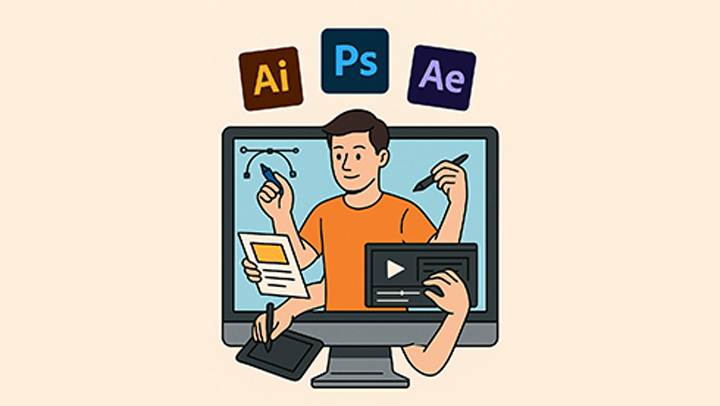Why Versatility is a Designer’s Superpower in Today’s Market

Lately, I’ve noticed a trend in conversations across LinkedIn, design forums, and other creative spaces. Many “Graphic Designers” are expressing frustration that employers and clients expect them to be multi-talented, skilled in more than just one discipline. While I understand the concern about being stretched thin, I have a different perspective.
The reality is, the design industry has always evolved. New tools emerge, trends shift, and client expectations change. The most successful designers adapt by continuously learning. Picking up new skills isn’t just about surviving in a competitive market, it’s about thriving in it.
I’ve seen this firsthand in my own career. I started early learning Photoshop and Illustrator, mastering the fundamentals of image editing, layout, and vector art. Those two tools became my creative foundation. As my career progressed, I expanded into video editing, which taught me how to craft complete visual stories from raw footage to polished, ready-to-publish content. Later, I added After Effects to my skill set, allowing me to merge illustrations, photos, and video into dynamic motion graphics. This combination of design, editing, and animation skills developed over many years has opened doors to projects that require a seamless blend of disciplines, from brand design to high-end promotional videos and animations.
As part of my ongoing commitment to learning, I’ve been dedicating time to mastering AI tools for design and content creation. From generating concept art to speeding up repetitive design tasks, I’ve seen how AI can complement and enhance my existing skills in motion graphics, video editing, and design. While I’m still exploring the full potential of these tools, I continue to experiment and refine my approach. One day, when a project calls for AI-assisted creativity, I’ll be able to integrate it seamlessly into my workflow and deliver results that combine human expertise with cutting-edge technology.
Versatility is not about being a jack-of-all-trades and master of none. It’s about being a master of multiple trades that complement each other. When your skills work together, each one amplifies the other, giving you the ability to deliver cohesive, high-quality results across different mediums.
If you want to stand out in today’s market, don’t think of “wearing many hats” as a burden. Think of it as a competitive edge. Choose a new skill, start learning, practice it, and eventually you can market yourself as someone who offers that service. Clients and employers value professionals who can solve multiple problems without outsourcing every single task.
The design world rewards those who stay curious, keep learning, and find creative ways to connect their skills. The more you can do well and in harmony the more opportunities you’ll have to create, grow, and succeed.
